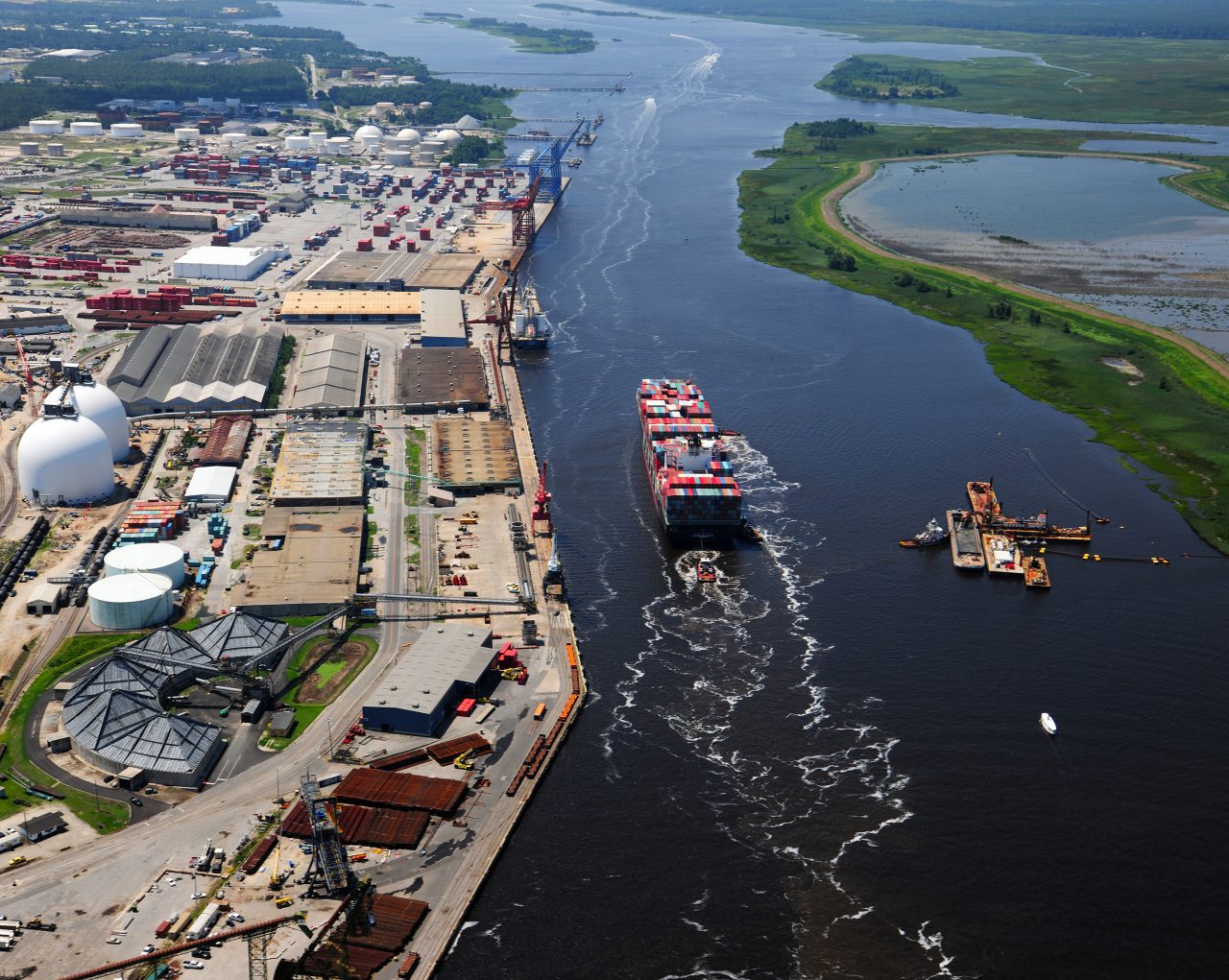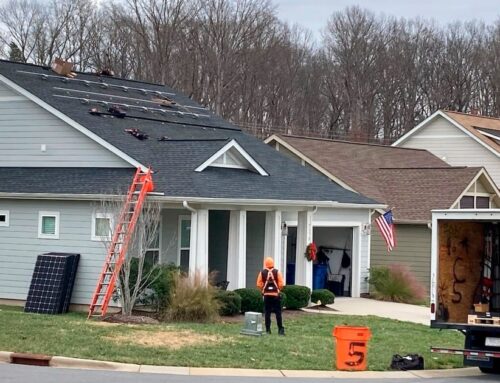Port’s Cape Fear dredge project fails taxpayers, environment
November 4, 2025

To stimulate discussion and debate, Coastal Review welcomes differing viewpoints on topical coastal issues.
The U.S. Army Corps of Engineers is currently working on an Environmental Impact Statement (EIS) for the Port of Wilmington’s plan to deepen the Cape Fear River, with the stated goal of accommodating larger cargo ships. As a retired Corps of Engineers senior project engineer, I feel it’s crucial to raise some serious concerns about this initiative.
The North Carolina State Ports Authority has significantly overlooked other viable alternatives, besides incremental deepening, and failed to assess the extensive infrastructure damage that increased freight traffic could inflict on our roads and bridges. This is particularly evident in major new projects like the replacement of the Cape Fear Memorial Bridge and Wilmington’s Rail Realignment Project. Both are billion-dollar investments intended to accommodate the large volume of new truck and rail freight movement. One only need to look at the definition of the secondary effects as defined by the National Environmental Policy Act (NEPA). These secondary effects clearly relate to the need to expand the port’s freight-handling capacity.
Deepening the river will only worsen flooding, affecting areas around the downtown Wilmington waterfront and the historically significant North Carolina Battleship site. It will also lead to a substantial loss of vital wetlands and floodplains due to increasing saltwater intrusion, a value the Ports Authority conveniently understates in its Section 203 report required under the Clean Water Act.
From 1980 to 2017, DuPont, and now Chemours, released vast quantities of hazardous PFAS compounds, polluting nearly 100 miles of the Cape Fear River, including the proposed dredging prisms defined in the port’s set of alternatives. This legacy of contamination must be a central part of the EIS evaluation, as it directly challenges the claimed benefits of the project. Additionally, the reverse osmosis water treatment plant in Brunswick County, which aims to remove PFAS from drinking water, will release highly concentrated PFAS-contaminated wastewater 3 miles upstream of the port. This will further complicate the environmental challenges posed by the proposed dredging project, as well as future dredging operations and maintenance requirements, which once again go unaddressed in the port’s Section 203 report.
Why is this a critical oversight? PFAS clings to or settles into fine sediments like silt and clay found in the soil in and around the dredge-soil prism proposed to be dredged. It’s only logical that when these contaminated sediments are dredged, a safe disposal management plan would be an essential requirement for both federal and state regulators. When PFAS is detected in the dredged sediment, our regulators need to determine whether the material is suitable for placement or disposal, especially regarding upland sites or beach renourishment projects.
The Corps’ “Beneficial Use” strategy aims to repurpose the dredged material as a resource. However, this faces significant hurdles within the scope of this proposed project, as regulators decide how to prevent PFAS from being released back into the environment. The Eagles Island disposal area, which predates NEPA and was built on a previously healthy wetland and floodplain, is not an appropriate site for disposing of contaminated dredged soil because it lacks a liner. Furthermore, researchers in North Carolina and across the globe continue to investigate the damage that PFAS is causing to aquatic ecosystems as it transfers from sediment back into the water column during dredging and placement operations.
Without the Corps thoroughly addressing PFAS contamination, there is zero chance of ensuring the health and well-being of those who rely on the river’s resources in the future. This is particularly important when considering deepening options for the beneficial uses of these contaminated sediments. PFAS contamination adds another layer of complexity that will require extensive testing and could significantly impact project costs and feasibility.
There is no question that this proposed dredging project will certainly disturb sediments, releasing PFAS and other contaminants back into the water, which poses risks to aquatic life and human health.
Key issues include the following:
- Contamination — Dedging stirs PFAS, disrupts water quality.
- Aquatic risks — PFAS can bioaccumulate in marine organisms.
- Health concerns — Contaminated fish and drinking water pose human health risks.
- Regulatory challenges — Lack of consistent state or federal guidelines will create confusion for any of the deepening alternatives proposed under the port’s Section 203 study.
To enable the federal and state governments to properly manage PFAS risks related to deepening or maintenance dredging within the navigation channel, increased testing, ongoing research, development of standards, and best management practices are essential.
PFAS contamination is impacting rivers and harbors across our country. Michigan’s Department of Environment now mandates PFAS testing for sediments in harbor dredging, which is causing project delays, such as in Grand Haven, due to unclear safety standards. The Corps warns that this could reduce dredging operations from 24 to only three to five harbors annually due to rising costs — up to 200% higher with resampling — and the lack of precise guidance.
Given these critical issues, taxpayers should be alarmed by a proposed port project that fails to account for its environmental and infrastructural costs. Suppose we don’t consider the long-term implications of the port’s proposed alterations to our river. In that case, we might find ourselves stuck with unsustainable financial and environmental costs, while the economic benefits remain questionable at best.
It is our river, yet it has been treated as a stepchild compared to other, less critical economic priorities. Standard economic models often overlook the real financial value of natural resources and ecological systems like those on the lower Cape Fear River. Since nature’s “goods and services,” such as clean air, fresh water, and fully functioning floodplains and wetlands, are often considered free, they are becoming overused and undervalued. As I’ve tried to explain here, the degradation of our environment directly affects our citizens, taxpayers, and the species that depend on healthy ecosystems.
As the Corps prepares its EIS, it is essential to find more sustainable alternatives than digging us into a deeper hole that we can’t escape. If not for us, then how about our kids, grandchildren, and their grandchildren?
If you have an opinion or concerns about this project, please submit your comments to:
By Email: WilmingtonHarbor403@usace.army.mil, or by mail to ATTN: Wilmington Harbor 403, 69 Darlington Ave., Wilmington, NC 28403, or by comment cards at the public meetings.
Opinions expressed by the authors are not necessarily those of Coastal Review or our publisher, the North Carolina Coastal Federation.
Search
RECENT PRESS RELEASES
Related Post




